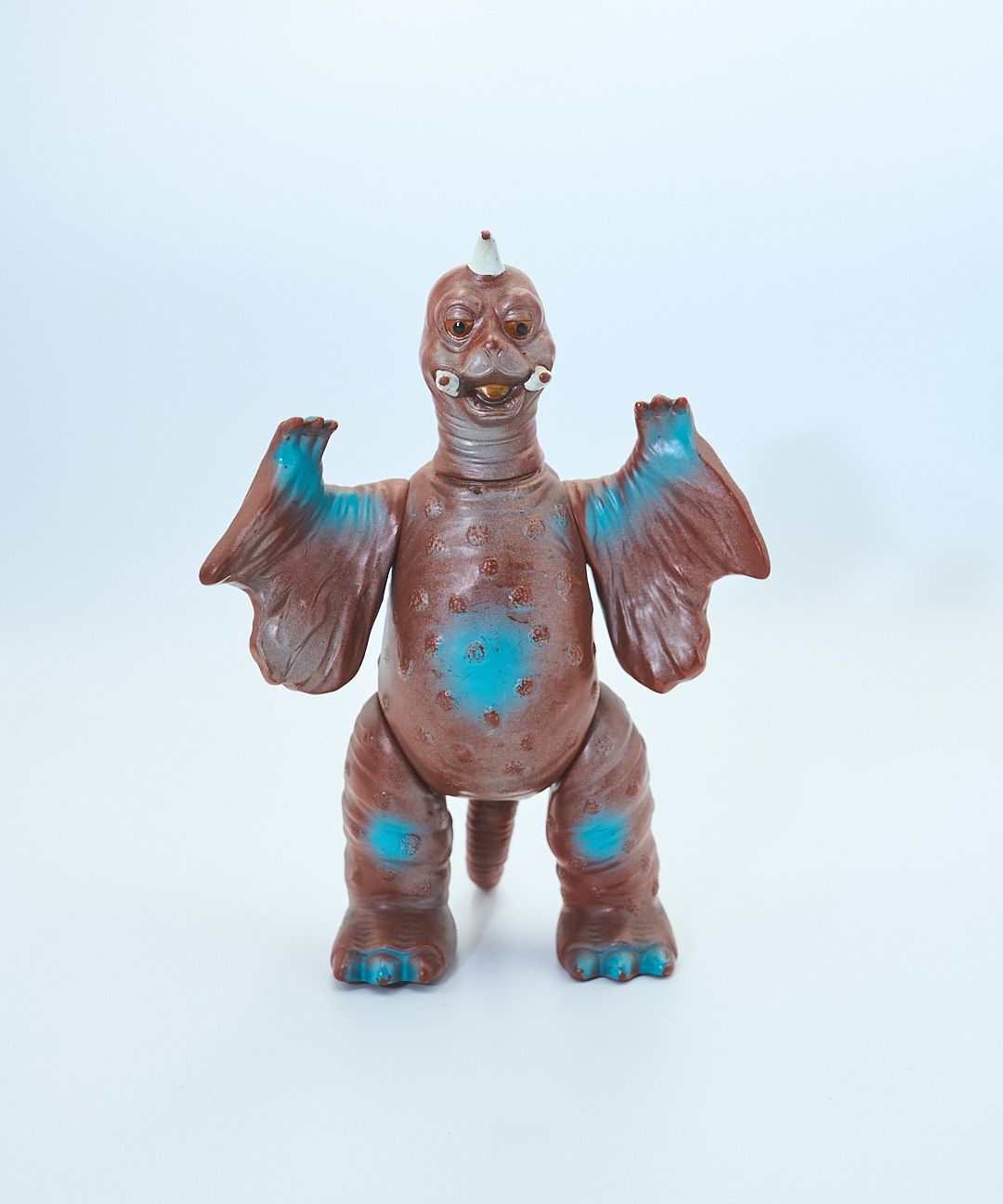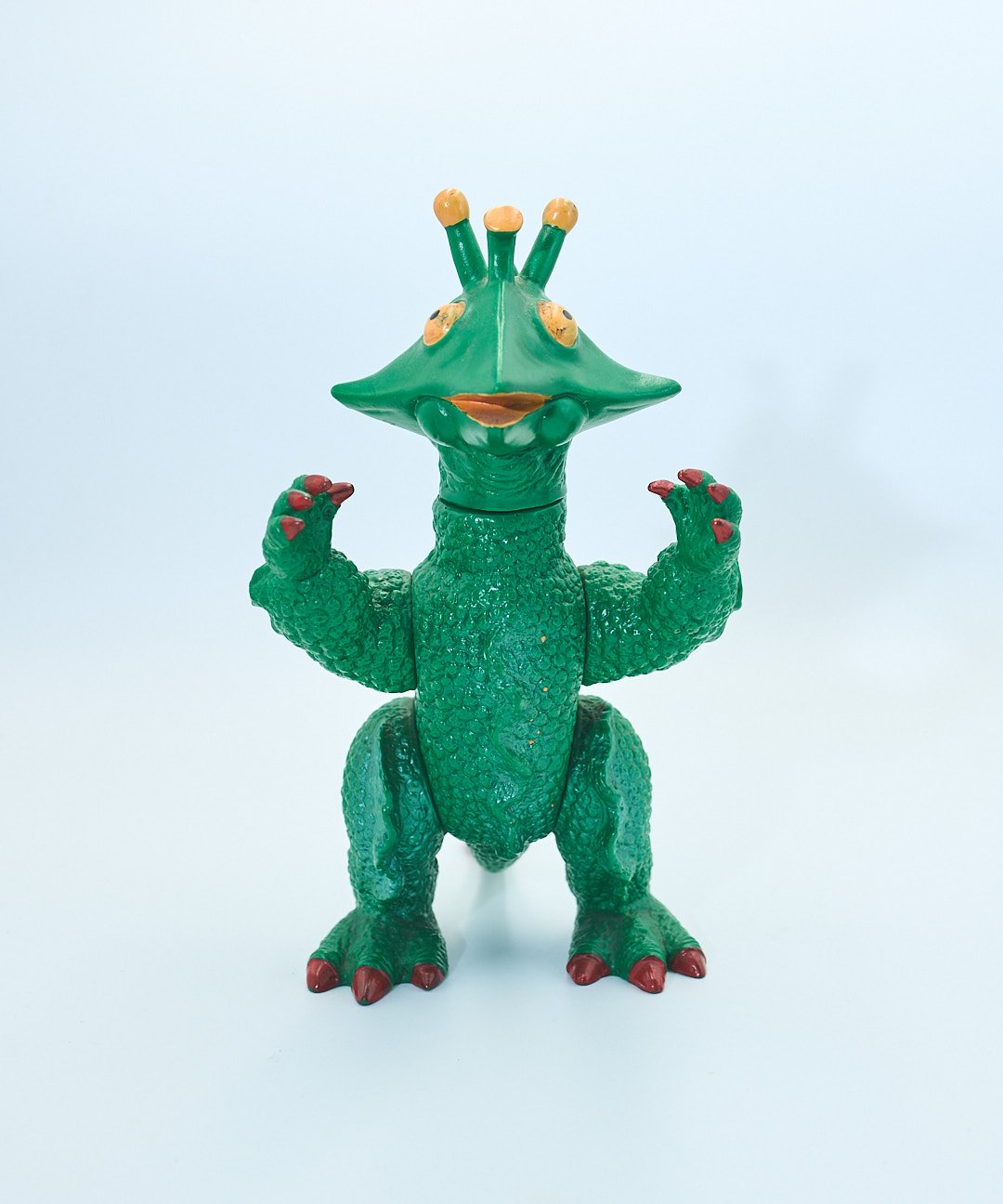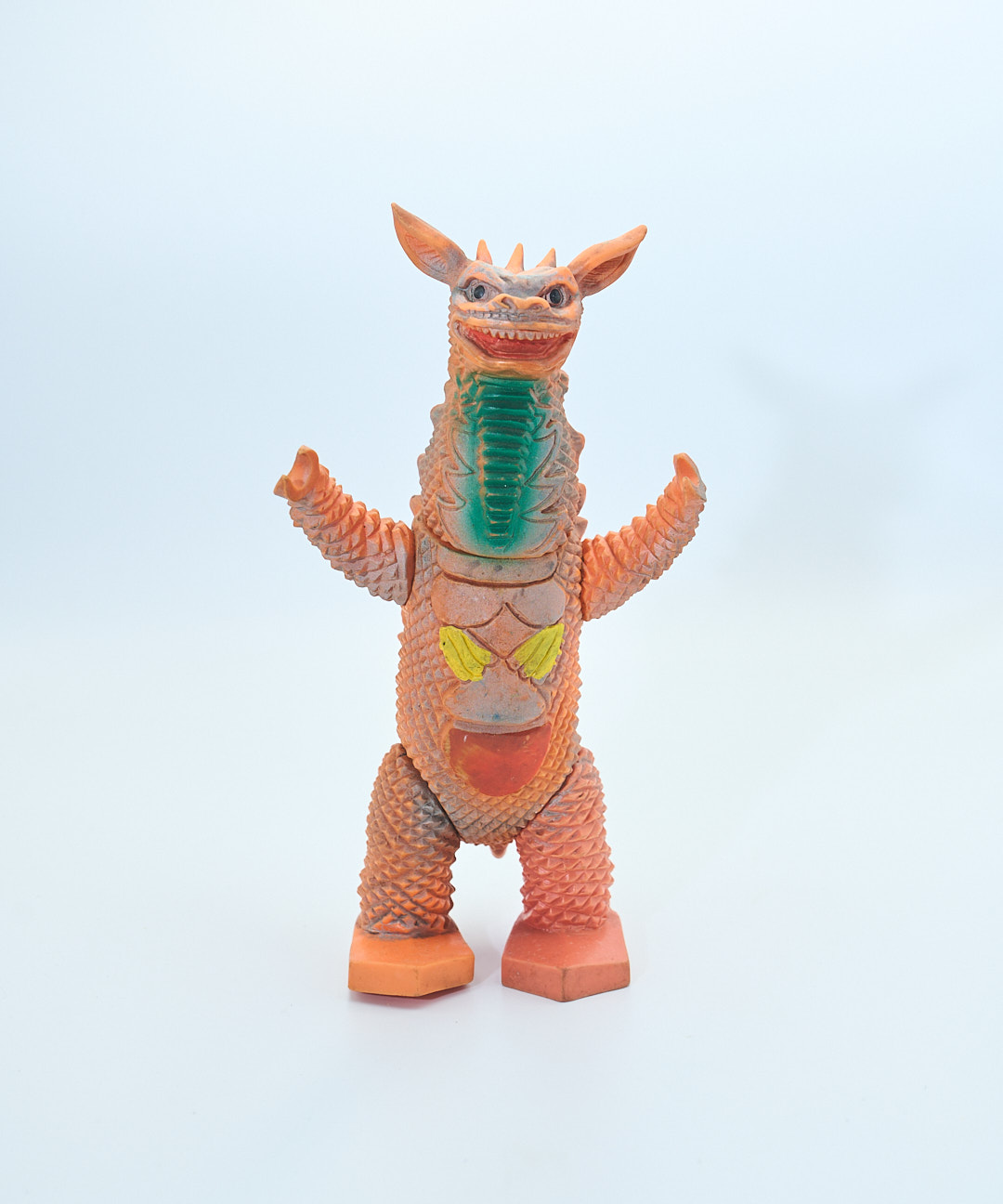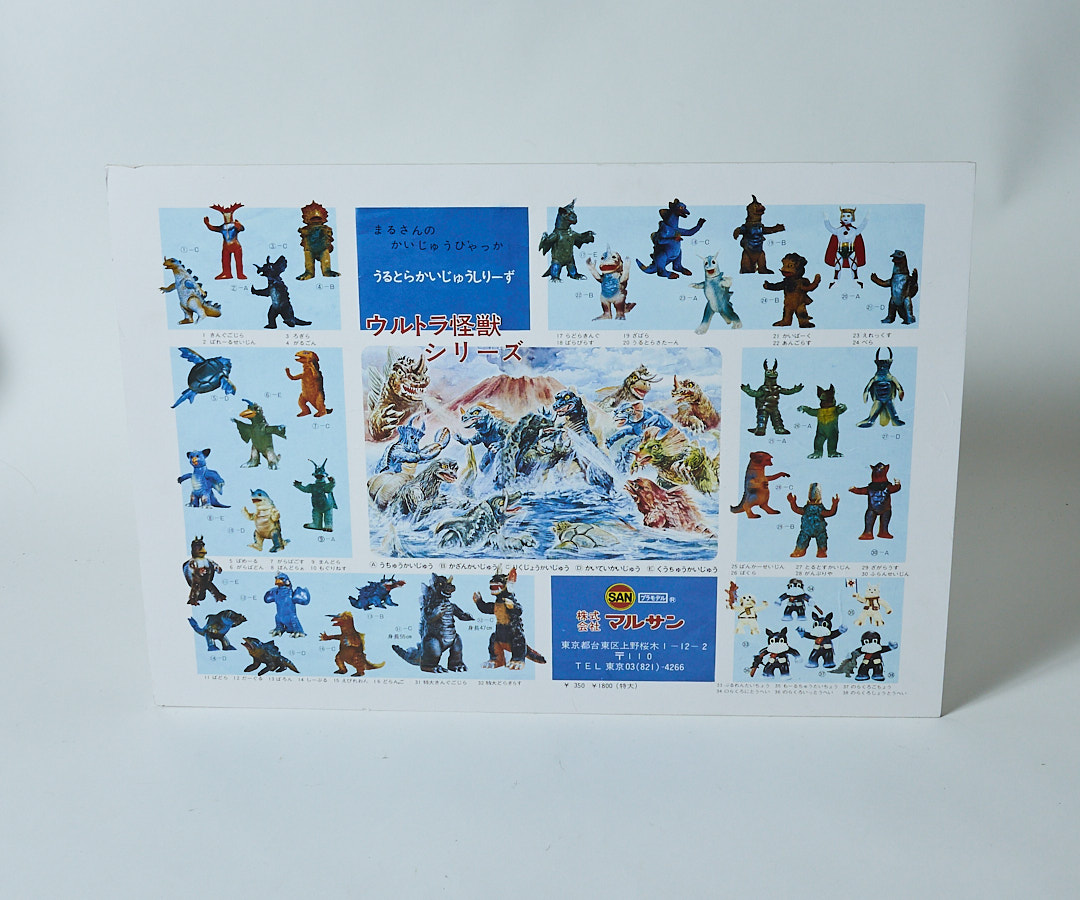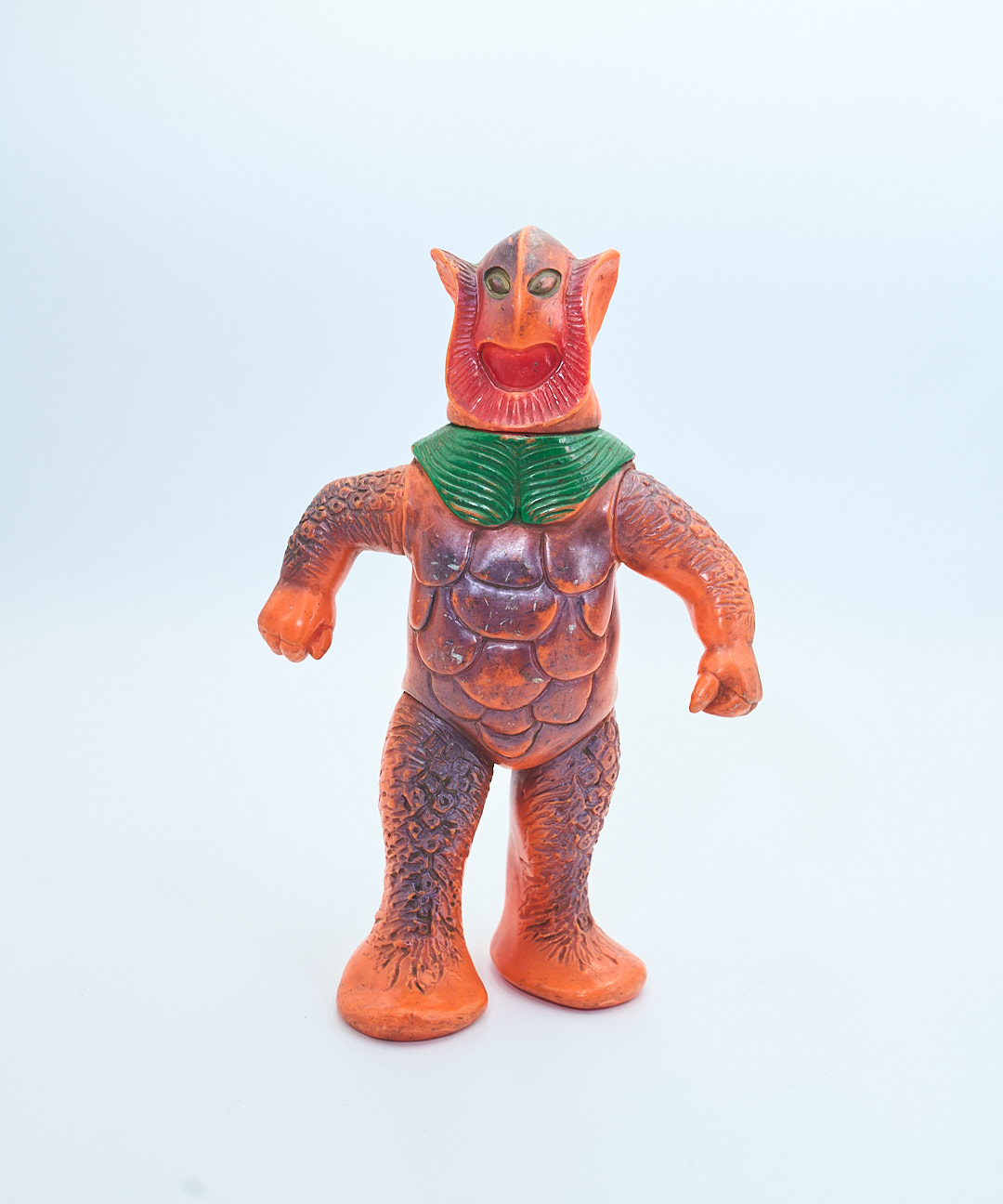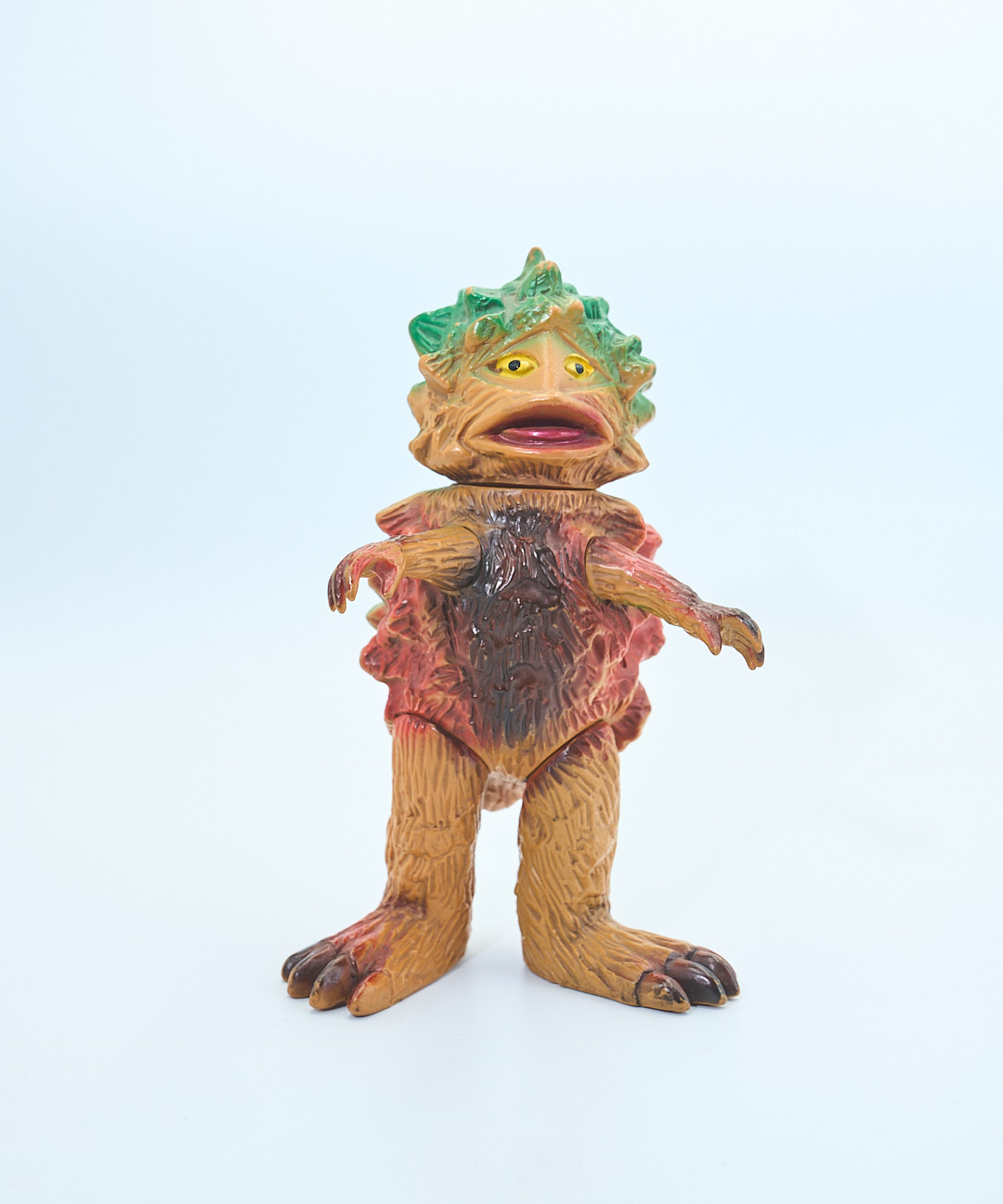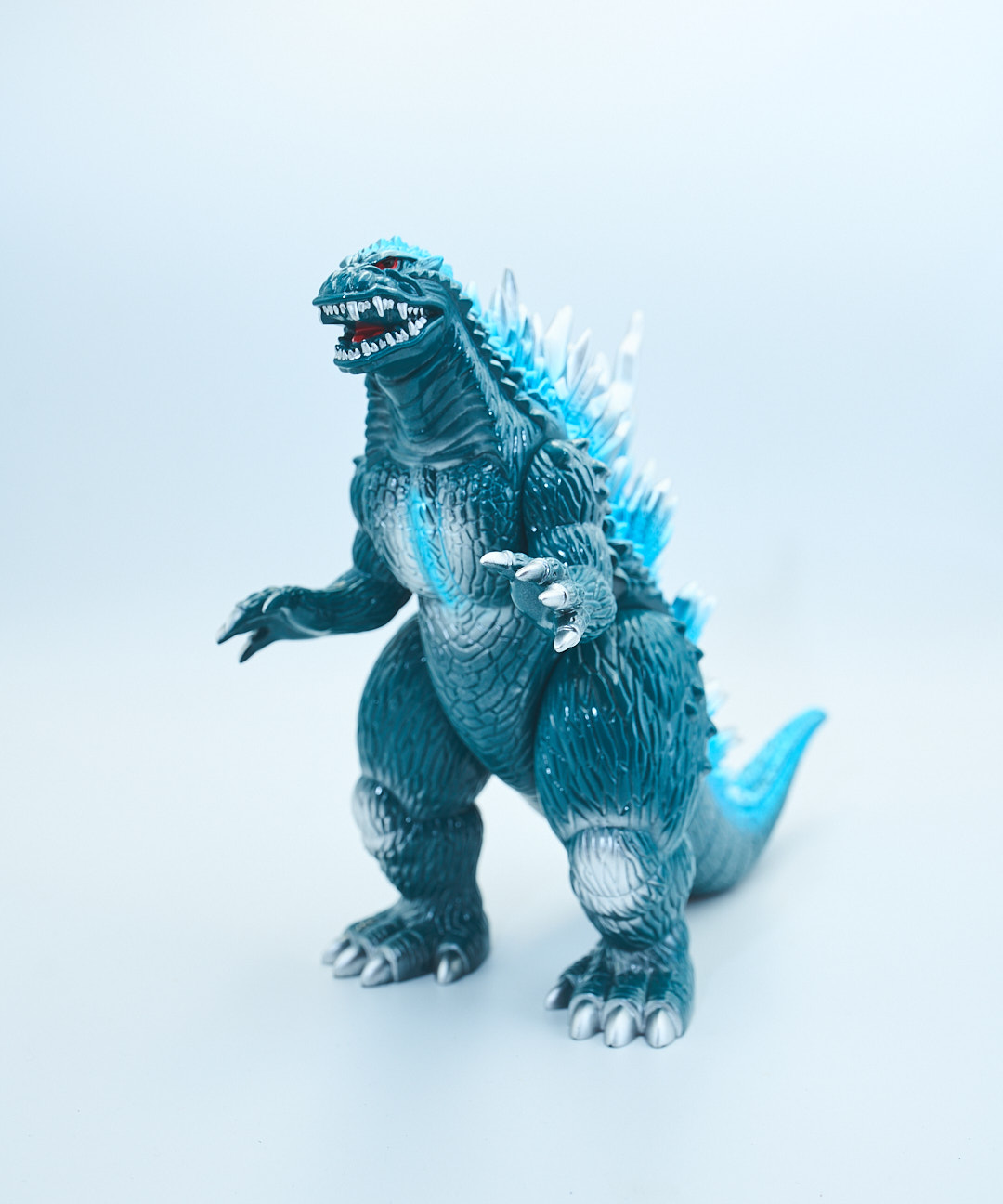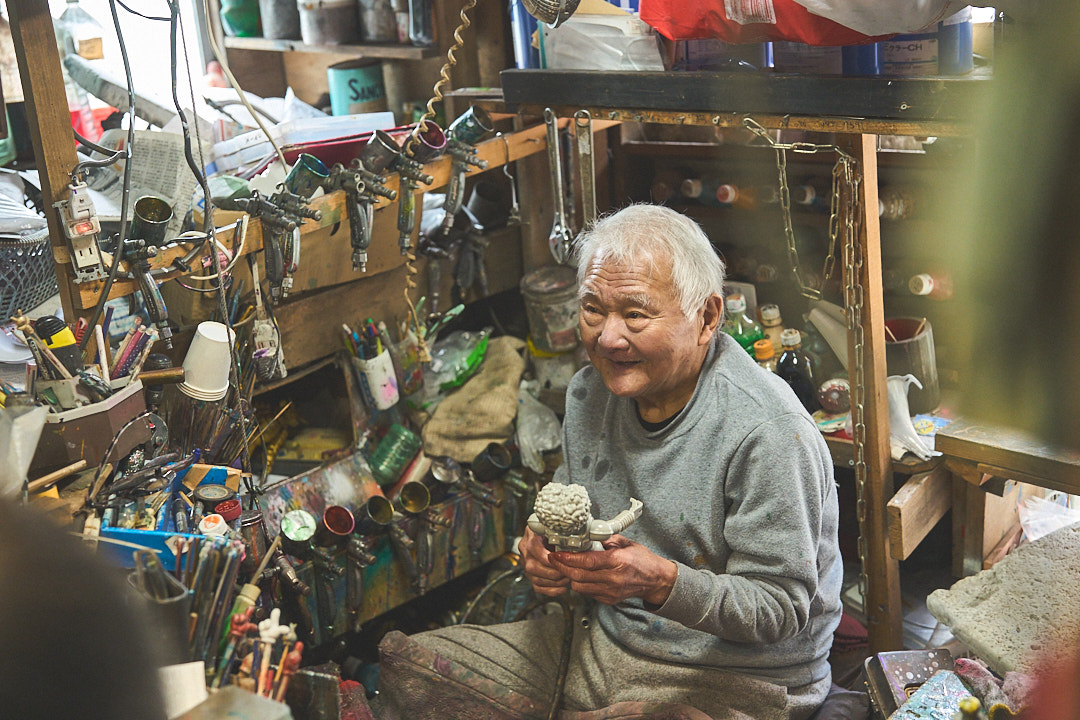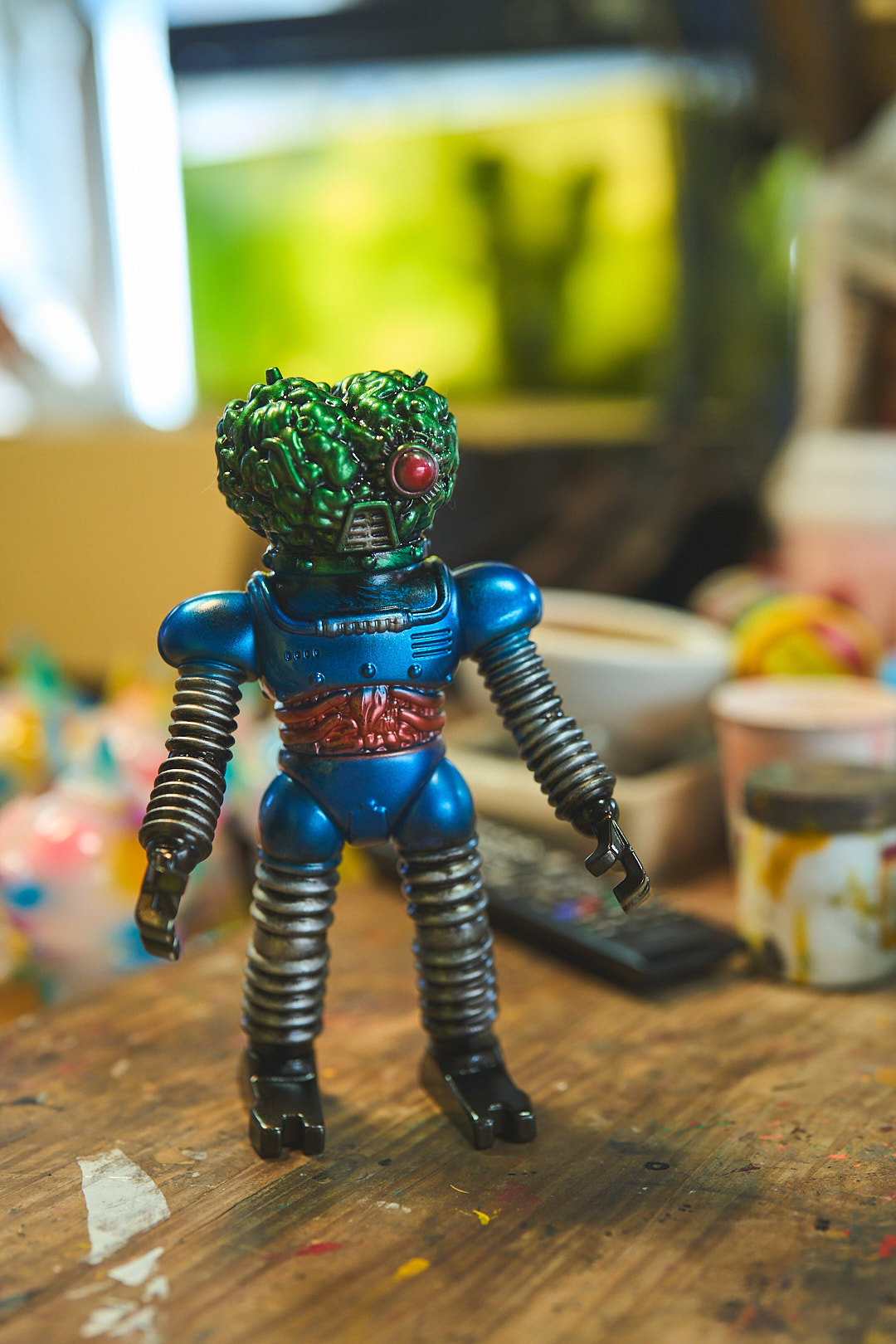CATEGORY
AREA
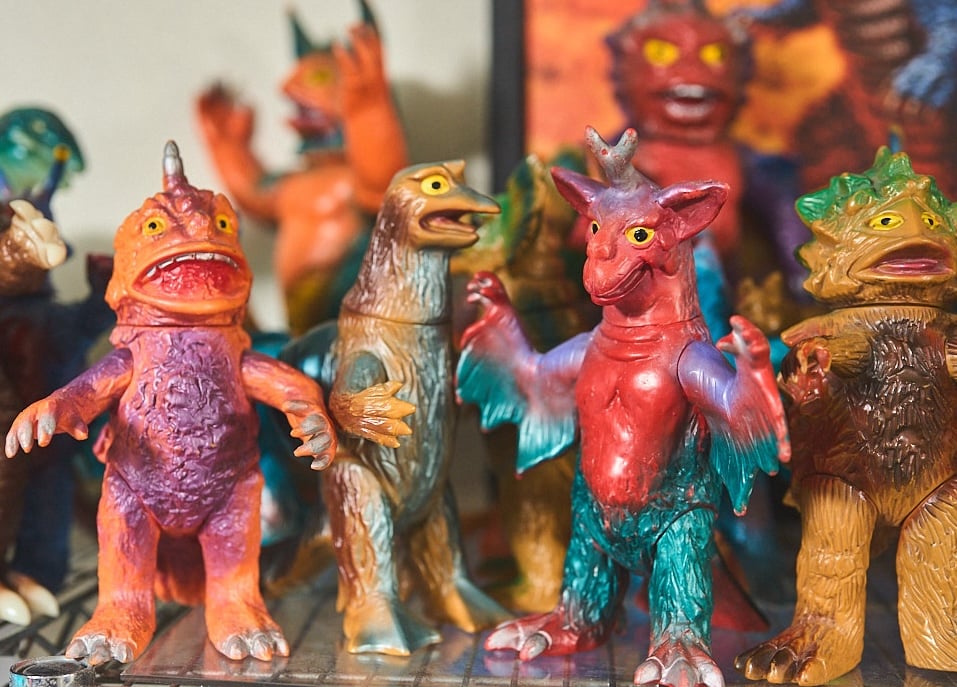
2025.05.15
From iconic characters like Godzilla and Ultraman to original creations by independent artists, Sofubi (short for "soft vinyl figures") continue to captivate enthusiasts worldwide. The history of these soft vinyl figures actually began in the working-class neighborhoods of post-war Tokyo. How did Sofubi emerge as a cultural phenomenon that fascinates so many people today? We visited a legendary company and a master craftsman who has been deeply involved since Sofubi's earliest days.
Sofubi first became popular in Japan in 1966, when Marsan released soft vinyl monster figures. According to Eiji Kaminaga, the sixth-generation president of Marsan, the company initially specialized in tin toys and plastic models.
"Marsan, headquartered in Asakusa, was primarily a tin toy manufacturer that had success with tin Cadillac cars in 1953, just after the war. At that time, toys were a pillar of Japan's export industry, and many toy companies flourished in Tokyo's downtown neighborhoods. Around 1960, Marsan's main products shifted from tin toys to plastic models. In 1964 we released a successful 'Godzilla' plastic model kit."
In 1966, the monster-themed special effects TV show "Ultra Q" began broadcasting. With average viewership exceeding 30%, it triggered an unprecedented monster boom. According to Kaminaga, Marsan decided to produce monster toys targeted at younger children, below the age group that typically assembled plastic models. Thus, monster Sofubi figures were born.
The monster "Pegira" from episode 5 of "Ultra Q"
The first authentic soft vinyl figure in Japan is believed to be the "Milk-drinking Doll" by Masudaya in 1954. A few years later, Marsan released a similar soft vinyl "Mammy Doll." Riding the monster boom wave, they created monster figures using soft vinyl. "We outsourced monster Sofubi production to Shimada Toy, which had been making adorable animal Sofubi for young children. Since the sculptors who had been crafting animal figures were now creating monster prototypes, Marsan's monster Sofubi had a distinctly cute aesthetic."
The monster "Girara" from the 1967 film "The X from Outer Space"
The monster "Pegira" from episode 18 of "Ultra Q"
The monster "Gyango" from episode 11 of "Ultraman"
Released in May 1966, Marsan's monster Sofubi figures became an instant hit. They rapidly expanded their lineup to include monsters from not only "Ultra Q" but also the subsequent special effects series "Ultraman" and "Ultra Seven," as well as Toho's Godzilla and Daiei's Gamera, captivating children across Japan.
Despite setting a milestone in Japanese toy history with their monster Sofubi, Marsan went bankrupt in 1968 after the monster boom subsided. Excessive investment in slot racing toys had strained the company's finances.
"Marsan was reconstructed in 1969. This coincided with a resurgence in the monster boom, partly due to popular reruns of 'Ultraman,' so we decided to produce monster Sofubi again. However, other companies have already acquired the licensing rights for the Ultraman series. So in 1970, we released a large collection of original monster Sofubi that resembled licensed characters."
These original monster Sofubi from the reborn Marsan, somewhat resembling famous monsters from "Ultraman" and "Godzilla" films, were dubbed the "Ultra Monster Series." They were distributed differently from conventional toys, sold not in toy stores or department stores but in regional souvenir shops.
Despite their questionable resemblance to licensed characters, these "Ultra Monster Series" figures have become highly sought after for their unique designs, with some now even more popular than the official licensed monsters.
"Furan Seijin" (Alien Furan), somewhat resembling "Mefilas Seijin" (Alien Mefilas) from "Ultraman"
"Garugon," whose appearance and name resemble "Garamon" from "Ultra Q"
By the mid-1970s, the second monster boom had ended, and the once-popular Sofubi fell out of fashion. Marsan ceased Sofubi production and shifted its focus to toy springs and candy toys.
However, in the 1980s, collectors who had played with monster Sofubi as children began acquiring them as vintage items. As demand grew among these collectors for reproductions of the classic Marsan monster Sofubi, the company resumed Sofubi sales. Since the 1990s, they have continued to reproduce numerous monster Sofubi, from licensed characters to the Ultra Monster Series.
In recent years, Marsan has been actively expanding internationally.
Around 2017, inquiries about Sofubi from overseas began to increase, and we participated in a toy festival in Taiwan that year. Since then, we've been actively developing our international presence. Licensed monsters like Godzilla and Tsuburaya Productions' creatures are popular in the US and Taiwan, and we've recently held pop-up events in Mexico and the UK. We're focusing on this expansion as more international customers are becoming interested in Marsan's original monsters."
Both reproductions and new Godzilla Sofubi are popular overseas.
60年近く前に東京下町の小さな会社が生んだ怪獣ソフビが、倒産を乗り越えて作られ続け、世界中に届けられているのは、ある種の奇跡といっていいでしょう。この紆余曲折を経て続く長い歴史が、ソフビを単なる「玩具」の枠を超えて「文化」として定着させたのです。
We visited the workshop of Hiroshi Goto, a craftsman who has been painting Sofubi since the dawn of the Japanese soft vinyl era and stands as a living witness to Sofubi history alongside Marsan.
Master Goto's workshop is located in Tokyo's Katsushika district. During the Showa-era Sofubi boom, the area was filled with toy factories and coloring workshops, but most disappeared and were replaced by residential neighborhoods. Master Goto is reportedly one of the last remaining painting craftsmen. His workshop is crowded with various paint colors and well-used painting tools, conveying a sense of historical weight.
Hiroshi Goto of "Goto Coloring Workshop," known as "Master Goto"
Master Goto's techniques for painting recent Marsan Sofubi and various manufacturers' and artists' soft vinyl figures have gained recognition not just in Japan but also among fans in the US, China, Mexico, and beyond. His workshop receives painting requests from around the world, as his skills, honed since the Showa era, captivate global audiences.
We were granted special permission to document Master Goto's painting process.
He swiftly mixes his uniquely formulated paints stored in shochu bottles to create vibrant colors, then applies them boldly and quickly using a trigger-type airbrush. His fearless approach resembles that of a seasoned swordsman.
After the initial painting, he sprays a dark paint over the entire figure and immediately wipes it off to create deep shadows. This technique is unique to Master Goto and is made possible by his specially formulated paint that doesn't remove the underlying colors. The paint dries quickly, and a beautifully painted Sofubi is completed in moments.
The existence of manufacturers and artisans who have supported Sofubi since the Showa era is precisely why Sofubi culture has matured, been cherished, and become a fertile field for nurturing new talent. Inheriting the history these pioneers built, new manufacturers and young artists will continue to weave the next chapter in Sofubi history.
Writer, pachinko monster soft vinyl collector, soft vinyl research and development. Author of "Salaryman Manga no Sengo Shishi" (Postwar History of Salaryman Manga), published by Yosen-sha.
Instagram @pachikaiju
